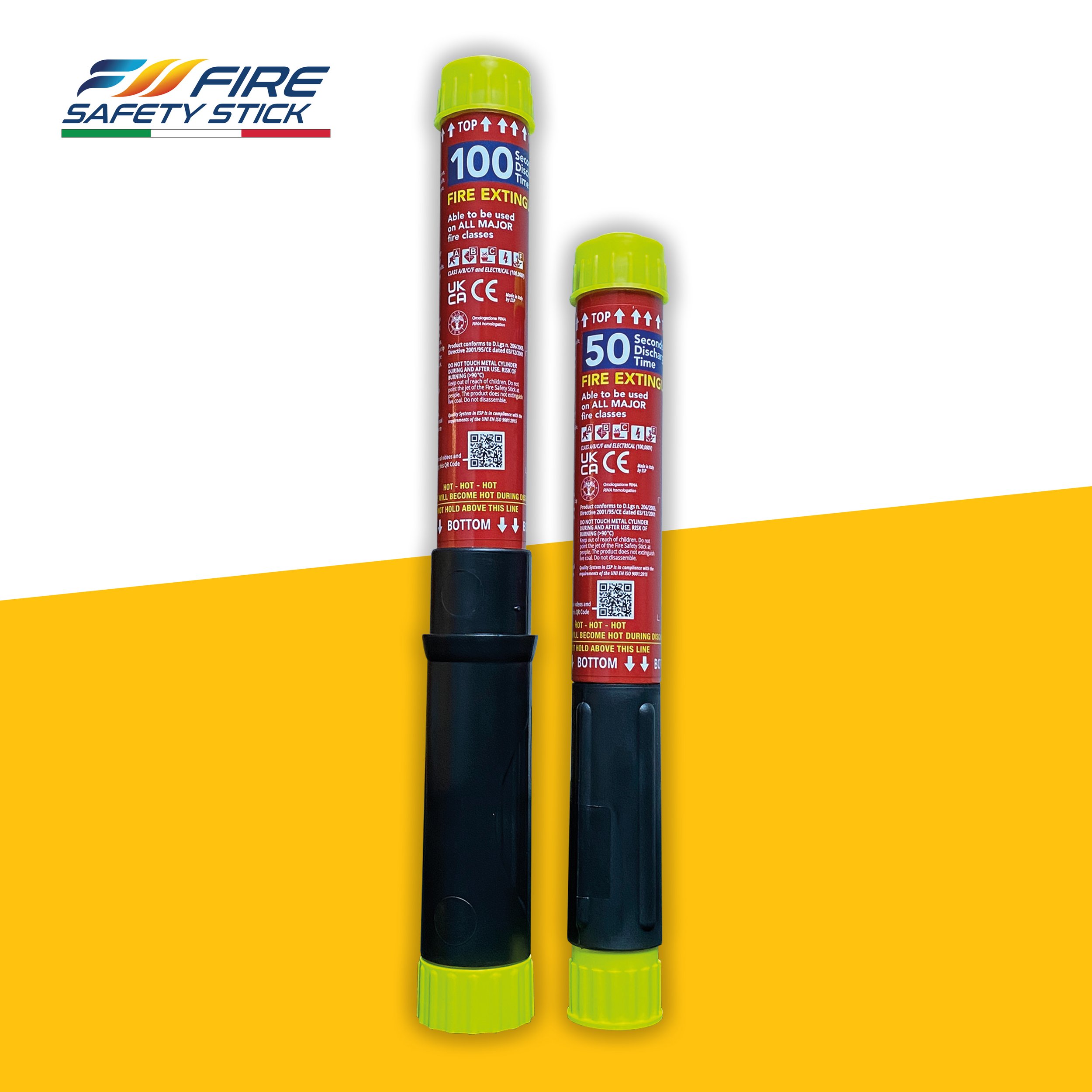Fire Safety Stick
Transforming the way we think about fire with a compact & simple extinguisher
Did you know: The Fire Safety Stick uses a compound that was originally invented during the 1960s space race to stop fires without a harmful mess
The Fire Safety Stick is a revolutionary fire extinguisher for fast, effective, and clean fire suppression in a compact form.
No pressurised canister, it uses a solid compound that produces an aerosol when activated. This aerosol interrupts the chemical reaction of fire, quickly and efficiently extinguishing flames.
How does the Fire Safety Stick work? – The chemistry
This process allows the stick to extinguish many different types of fires through saturation, while its slow bio-degradation in the environment, further prevents the likelihood of subsequent fires.
The extinguishing process involves two different reactions: one is physical and the other, chemical. The physical reaction relates to potassium ions (or Free Radicals) being oxidised rapidly in air, effectively removing the oxygen at flame level (although not sufficiently to impede the breathing of users nearby). When in contact with air, alkaline salts consume a quantity of oxygen, thus depriving fires of oxygen. Then the chemical reaction is created through the stable link between potassium particles and the fire’s combustion particles. Through the two reactions, a quick oxidation process takes place, immediately transforming the jet from a solid state into a gaseous state freeing the potassium particles. These atoms intercept and interrupt any other free particles produced by the fire’s natural chain reaction combustion process.
Reminder: this happens at the flame level and leaves plenty of breathable oxygen for the user.
Potassium has strong inhibitor qualities due to its weak ionization energies. The extinguishing agent being used is composed of Potassium Nitrate, organic oxidiser, and plasticiser resin.
When the Potassium Nitrate (KNO3) reacts (inside the body of the extinguisher) it breaks down and the aerosol that is formed is made up primarily of free radicals of Potassium K+, of Nitrogen N (an inert gas).
The aerosol that comes out of the unit reacts with the fire. Potassium radicals (K+) capture the Oxygen (O2) of the combustion thereby extinguishing it.
At the end of the extinguishing process, the following is discharged into the atmosphere:
As a solid: particles of Potassium (that have reacted with the Oxygen of the fire) having a size between 3-4 microns. These particles are invisible at sight and heavier than air. They disperse in the atmosphere and tend to deposit on the ground in no appreciable amounts.
As a gas: As Nitrogen; an inert gas already present in the air we breathe at more or less 78%.
As water vapour (and lastly) extremely minimal toxic by-products that are a result of the combustion process. (This amount is so slight, it does not conductive to electricity.






